NYC’s Forgotten ‘War on Christmas Trees’
Discover how an obscure holiday crackdown affects festive street vendors today!


Untapped New York has had offices in many different neighborhoods throughout the years and Lincoln Square was home to two of our early ones. It’s a neighborhood that I lived in from 1994 to 2015 and was privy to one of its large transformations from post-urban renewal landscape to the place it is today. For the purposes of this article, we will define Lincoln Square as the area from 60th Street to 71st Street, from Central Park to the Hudson River. This residential and commercial neighborhood includes, of course, Lincoln Center, but also the numerous institutions around it — some that have distinct associations with the music and arts center, others which pre-date it.
The area was once home to San Juan Hill, a vibrant jazz neighborhood that was home to Thelonius Monk. Targeted for urban renewal by Robert Moses, San Juan Hill was replaced by Lincoln Center, but not before scenes of the original West Side Story were filmed amidst the rubble. It took almost many decades for the area to revitalize, as was common with the mid-century urban renewal projects. But today, there are few reminders of the former neighborhood which has been replaced by glass, glitz and glamour. Despite a flurry of development (some argue overdevelopment), there are still some hidden gems to discover in Lincoln Square.
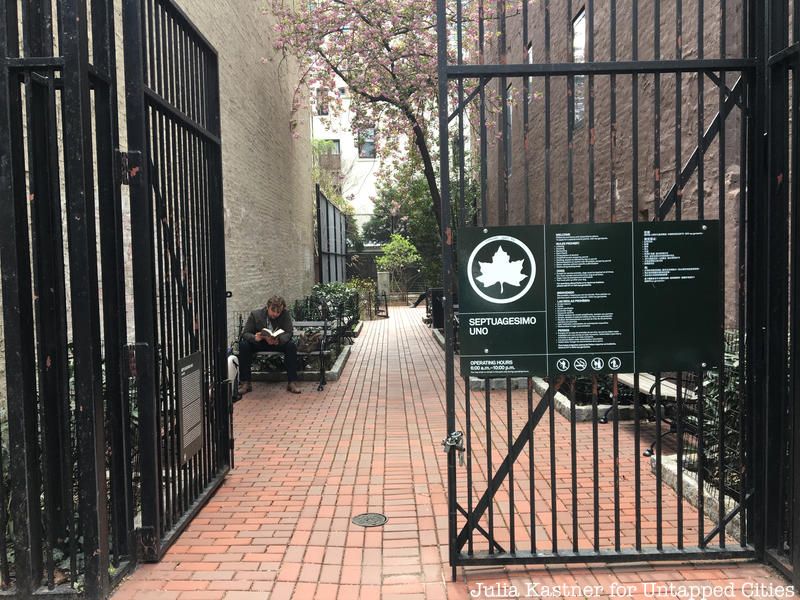
Septuagesimo Uno is one of Manhattan’s smallest parks (7th smallest, to be exact though it is often mistakenly cited as New York City’s smallest park. Located at 256 West 71st Street, its Latin name derives from the number 71. It’s secluded between two brownstones with some benches and received an upgrade in recent years with new brick paving, new trees, and benches.
Septuagesimo Uno was acquired by the city through condemnation on March 28, 1969, near the height of the city’s budget woes and was originally named the “71st Street Plot.”. The park wasn’t officially opened by the parks department until May 1981 and in 2000, the park benefitted from a $14,000 restoration project that, among other things, contributed the gates that now help enforce the park’s opening hours.
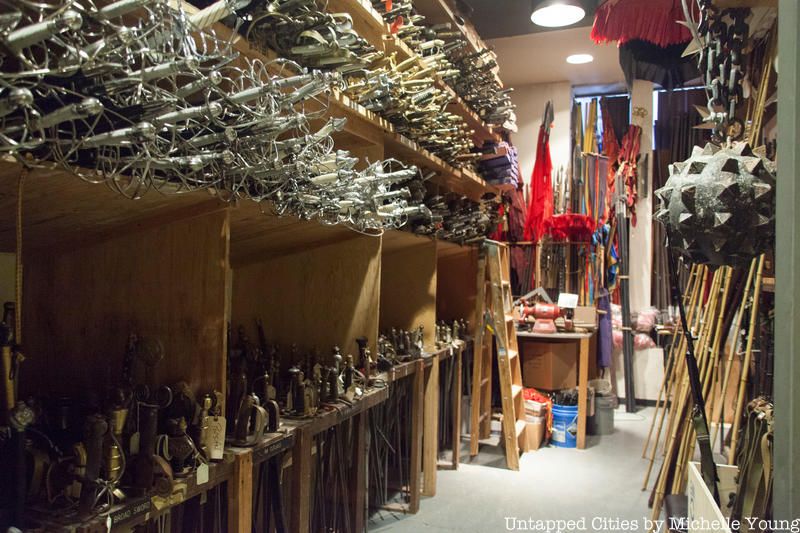
The Metropolitan Opera is full of its own secrets and fascinating behind-the-scenes spots, which you can see on special upcoming tours. One of our favorite places inside is the armory, if you’ve been to the opera, you know there is often a lot of fighting going on.
In the back of the house, there is an armory filled floor to ceiling with weapons of different types and eras. Here you’ll find swords, guns, cross bows, lances, and even a medieval wrecking ball. Signs denote the type of weapon, like sweep hilted rapier, a popular civilian weapon from the 16th to the 18th centuries, or a broad sword.
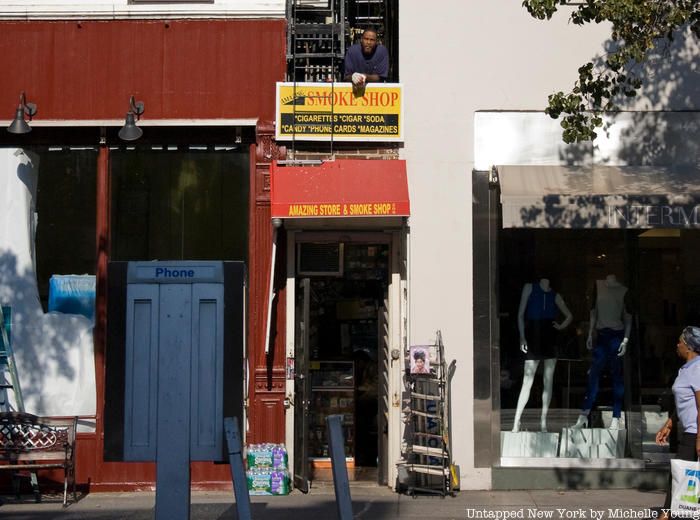
One of the curious developments in the urban fabric of Columbus Avenue between 68th Street and through 76th Street are the narrow shops that exist between buildings. You’ll find a smoke shops, a jewelry store, a shoe repair, a barber shop — all important neighborhood businesses that benefit from the lower rents the storefronts of small frontage provide.
The occupation of these narrow shops between buildings is part of a special zoning plan from the city of New York, which seems to have reinforced and/or extended already existing usages of in-between spaces along this avenue. In another regulation, Columbus Avenue between 72nd Street and 87th Street is part of the the Upper West Side Special Enhanced Commercial District which limits the width of ground floor frontage, and has prevented the influx of larger chain stores along this avenue.

The West Side YMCA was once a dormitory for students attending the McBurney School, a preparatory institution that inspired the plot of J.D. Salinger’s masterpiece The Catcher in the Rye. The unique facade features grotesques and other figures.
Inside there is a vintage pool that has blue tiling and an upper level balcony as well as as a basketball court. The YMCA also offers affordable accommodations for travelers.
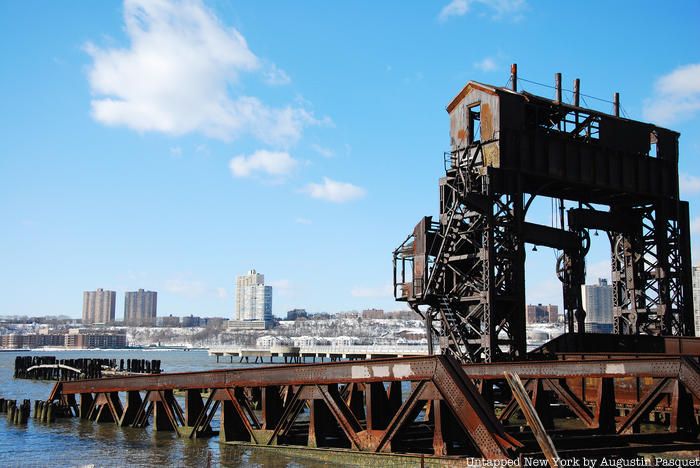
The 69th Street transfer bridge, along Riverside Park South, was once a transfer terminal for the New York Central Railroad, facilitating the movement of freight from railyards to river barges known as “car floats.” This one, which is nearly 110 years old, is “Floating Bridge No. 4” and for many years, has lay abandoned although a stabilization project from NYC Parks is underway. It has been the subject of a few art installations, including a light projection in 2018 by Tony Oursler Studio and the Public Art Fund.
Nearly twenty years ago, the Riverside South Planning Corporation announced plans to convert this floating bridge on W. 69th Street into a ferry terminal. Even Donald Trump supported it, thinking it would take pressure off the 72nd Street 1/2/3 subway station. But New York State Department of Environmental Conservation recommended against the ferry plan because dredging would destroy the habitats for aquatic plants and animals. Fortunately, the D.E.C. was not against preserving the structure itself, although some nearby residents wanted it demolished. It was added to the National Register of Historic Places in 2008.
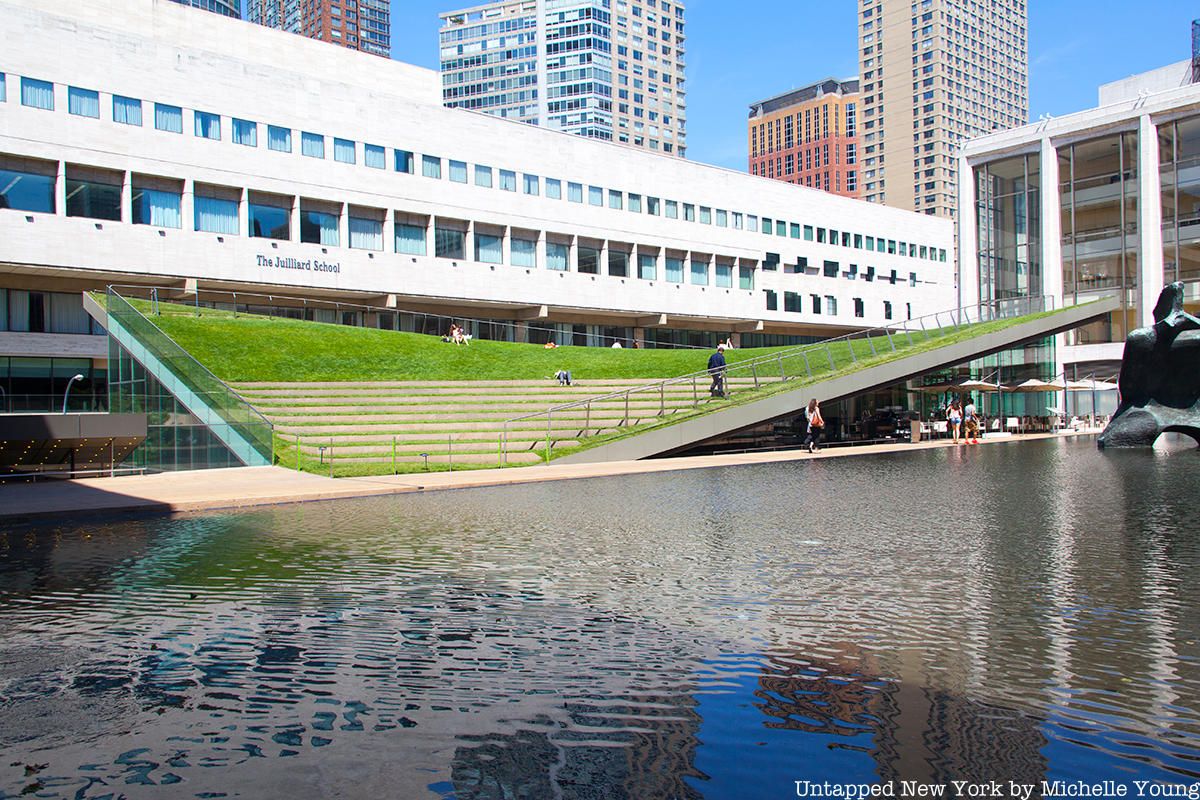
The Laurie M. Tisch Illumination Lawn may not be a secret place for locals but it’s still a unique and beautiful outlook point for visitors, whose entrance is only visible from inside Lincoln Center’s plaza, not along 65th Street.
The 7,200 square foot grass curved rooftop opened in 2010 as part of the renovation of Lincoln Center by Diller, Scofidio + Renfro, and sits atop a building that hosts Lincoln Restaurante, Film at Lincoln Center, and Indie Food + Wine cafe.

Artists, dancers, musicians, and writers dined at 1 West 67th long before it became The Leopard at des Artistes. The restaurant was built to serve the tenants of the Hotel des Artistes — a residence above the restaurant whose apartments lacked kitchens. It was the go-to place for the creative and successful — the likes of Rudolf Nureyev and Itzhak Perelman dropped in between rehearsals and performances. Noel Coward, George Balanchine, Isadora Duncan, Barbara Walters, Jerry Seinfeld, and Howard Stern have also dined at this famed restaurant.
Both the Hotel des Artistes and its famed restaurant space are New York City landmarks, and the Leopard des Artistes is worth a visit to see the beautiful murals , created in 1934 by Howard Chandler Christy.
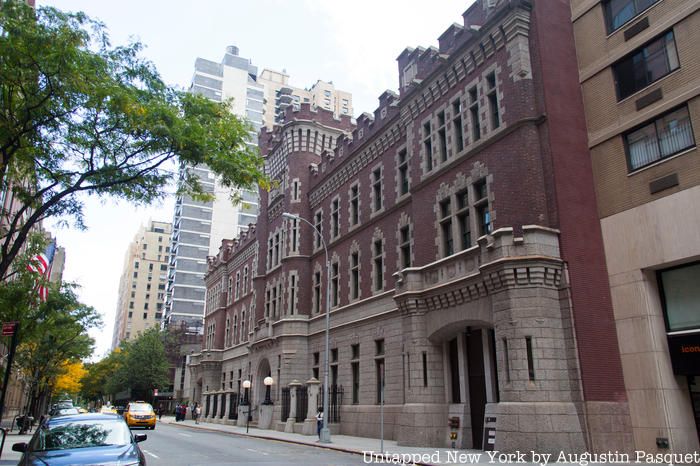
On 66th Street, between Central Park West is the castle-like First Battery Armory of the New York National Guard. It was built in 1901 and now serves as studios for ESPN, almost incongruously sitting between residential towers.
The First Battery had a predominantly German-American membership. The 102nd Medical Batallion used the armory from 1913 to 1973.

Image by Jinwoo Chong for Untapped New York
Inside the lobby of 157 Columbus Avenue, home to The Yard, a co-working space, and other businesses, is a lovely, under-the-radar gallery of cartoons and a collection of The New Yorker and Story magazine covers.
Their unique style actually is that of R.O. Blechman, a cartoonist and animator, whose work was placed in our Lincoln Center-area office building lobby at 157 Columbus Avenue by Landmark West, a preservationist group dedicated to preserving the history and culture of the Upper West Side.

Behind Trump Place, Freedom Place, runs from 66th to 70th Streets just west of West End Avenue. It commemorates Andrew Goodman, Michael Schwerner, and James Chaney, who on June 21, 1964 were murdered in Philadelphia, Mississippi, where they had been helping African-Americans register to vote as part of the Freedom Summer project. Chaney was a black man from Mississippi and Schwerner and Goodman were Jews from New York City. The three young civil rights activists had been traveling together when they were abducted by members of the Ku Klux Klan.
A new plaque replaced a prior one, but the community was also promised a monument as part of the new development, but it has yet to materialize and likely never will.
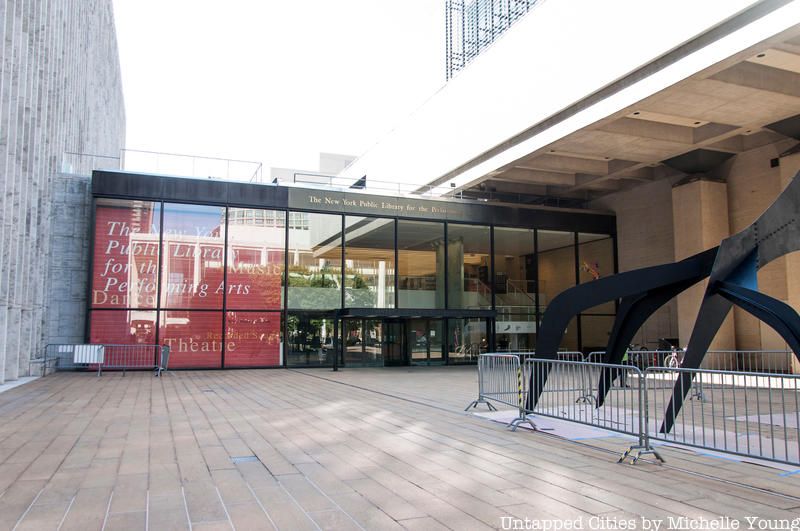
Tucked inside Lincoln Center between the Met Opera and the Vivian Beaumont Theater is the New York Public Library for the Performing Arts. This theater often has unique and fun exhibitions, including previous ones about Sesame Street and a recreation of Frank Sinatra’s recording studio, as well as important collections of film, music, theater and dance.
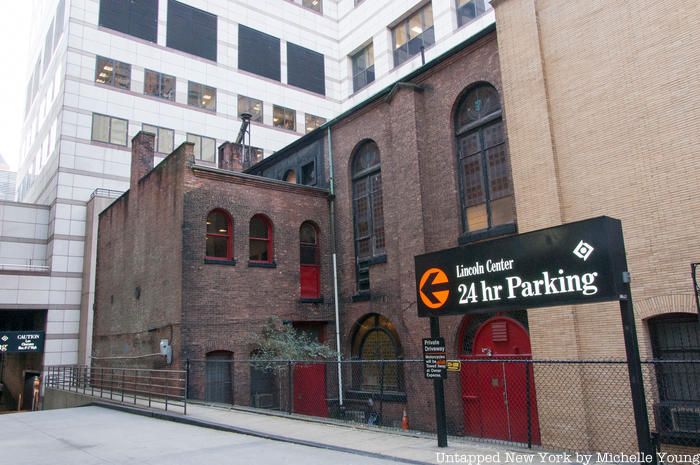
There is one holdout building within the Lincoln Center complex — it’s the Good Shepherd-Faith Presbyterian Church which was built in about 1887 with an organ that dates to 1893. Located at 152 W. 66th Street, it was designed by J. Cleveland Cady, who was the architect behind the old Metropolitan Opera House (now demolished). Today, it remains a house of worship but also as a venue for concerts.
Next, check out the Top 10 Secrets of Lincoln Center.
Subscribe to our newsletter